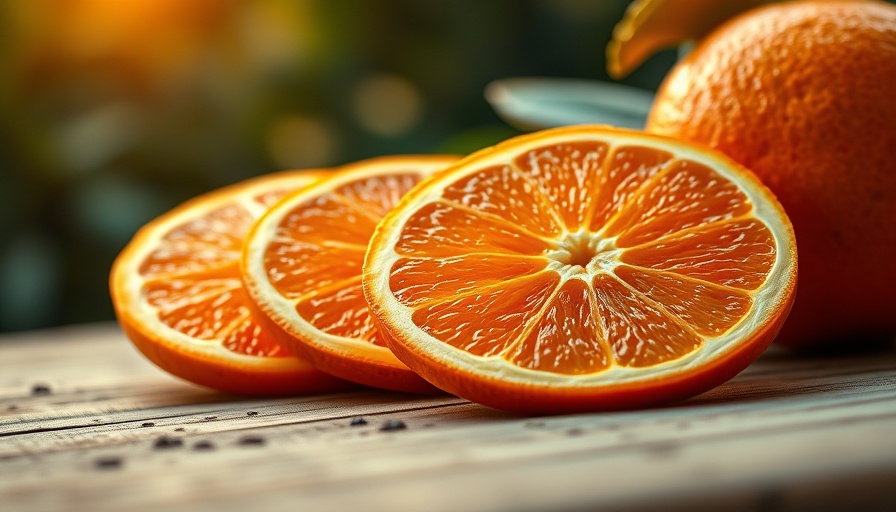
The Surprising Connection: How Your Brain Influences Immune Health
For many years, the relationship between the brain and the immune system seemed distant, akin to two different worlds operating independently. However, recent studies highlight a fascinating reality: these two systems are in constant, intricate communication. Understanding this connection opens up a new frontier in health, revealing how our mental state can significantly influence our physical well-being.
Understanding the Immune System: A Brief Overview
The immune system serves as our body's defense mechanism against foreign invaders, such as bacteria and viruses. Encompassing a complex network of cells, tissues, and organs, it diligently works to protect us from harm. But its efficiency isn't just a product of its physical components; emerging research now shows that the brain plays a pivotal role in regulating immune responses.
The Autonomic Nervous System: Your Body’s Communication Highway
Dr. Tanja Wright, a naturopathic doctor, explains that the brain utilizes the autonomic nervous system (ANS) to communicate with the immune system. This system operates continuously and subconsciously, functioning through two pathways: the 'fight or flight' pathway, which prepares the body for action, and the 'rest and digest' pathway, which promotes relaxation and recovery.
The brain releases neurotransmitters that can either stimulate or suppress immune cell activity. For instance, during stressful moments, the brain signals immune cells to ramp up their activity to prepare the body for potential threats. Yet, prolonged stress can be detrimental, leading to fatigue of the immune response and making it difficult for the body to combat infections.
The Role of Inflammation: A Double-Edged Sword
Inflammation is a vital aspect of the immune response, acting as the body’s alert system following an injury or infection. However, a balance between activation and regulation is crucial. Too much inflammation, driven by stress or chronic illness, can lead to conditions like chronic pain and even autoimmune diseases. Here, the brain serves as a regulator, mitigating excessive inflammatory responses when overwhelmed.
The Three Types of Immunity: A Quick Breakdown
Understanding the types of immunity is key to comprehending how the brain and immune system interact:
- Innate Immunity: The body’s first line of defense, it acts against harmful agents immediately upon entry.
- Adaptive Immunity: This immunity develops over time as the body encounters pathogens or through vaccinations, building a memory of previously encountered threats.
- Passive Immunity: Short-term protection derived from another individual, like a mother passing antibodies to her newborn through breast milk.
By understanding these types, we can appreciate how pivotal our brain's regulatory functions are in supporting our immune health throughout our lives.
Addressing Allergies: The Brain’s Influence
Interestingly, the brain's connection to the immune system extends to allergies. Allergens trigger immune responses, and how the brain interprets and reacts to these signals can influence the severity of reactions. A well-regulated brain can maintain a balanced immune response, potentially reducing the occurrence of allergic reactions.
Practical Insights: How to Support Brain-Immune Communication
Given the interconnectedness of the brain and the immune system, there are actionable steps individuals can take to foster this communication:
- Manage Stress: Techniques such as mindfulness, exercise, and adequate sleep can help minimize chronic stress, promoting better immune function.
- Nutrition Matters: A well-balanced diet rich in vitamins and antioxidants can support both brain health and immune responses.
- Engage in Social Connections: Strong relationships can bolster mental health, influencing immune system efficiency positively.
By adopting these practices, individuals can not only enhance their mental well-being but also empower their immune systems.
Conscious Choices: Embracing a Healthier Lifestyle
In a world where our lifestyles often prioritize speed and efficiency over health, it’s essential to consciously integrate habits that support both our brains and immune systems. Prioritizing mental wellness can ripple out, improving physical health outcomes. By understanding this link, we can develop a holistic approach to health that embraces the mind-body connection.
Taking proactive steps towards a balanced lifestyle will yield benefits that extend far beyond mere physical health—it’s a holistic embrace of well-being.
 Add Row
Add Row  Add
Add 




Write A Comment